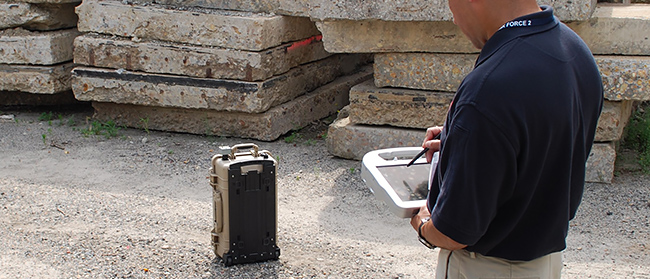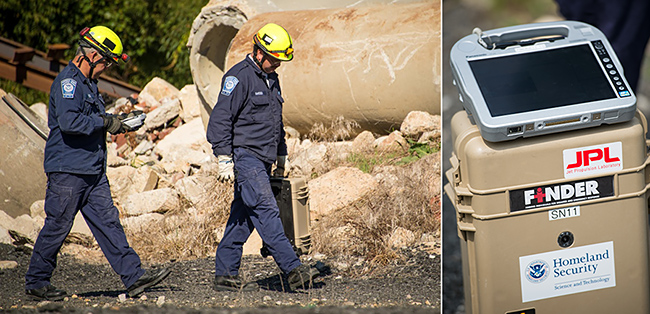
After major disasters, the task of finding living victims can be as challenging as it is critical. A natural disaster like an earthquake, or a manmade disaster such as a bombing, could leave an untold number of victims trapped or lost under many feet of rubble and debris. With survival rate being highest in the first hour after a disaster, it is crucial first responders are able to locate survivors quickly.
The massive April 25 Nepal earthquake caused incredible devastation displacing citizens, taking lives and leaving many trapped beneath fallen rubble. It triggered avalanches and left many stranded in remote locations across the country. This put rescuers in a difficult position. They needed reliable technology that could sustain the extreme environment of this disaster zone and quickly locate the missing. With lives on the line, it was important to have a solution they could depend on.
New FINDER search-and-rescue technology (supported by Toughbook rugged computers) was able to help locate four men who were buried underneath as much as 10 feet of bricks, mud and other debris. The men were trapped for days in the village of Chautara, one of the areas that was hit the hardest by the earthquake and suffered a third of the entire country’s fatalities, according to NPR.
FINDER devices detect victims trapped in wreckage and rubble

Two prototype FINDER (Finding Individuals for Disaster and Emergency Response) devices were deployed to support search and rescue teams in the stricken areas, according to the U.S. Department of Homeland Security. FINDER, developed by the DHS Science and Technology Directorate (S&T) and NASA’s Jet Propulsion Laboratory, is a portable device that uses microwave-radar technology to detect heartbeats and breathing of victims trapped in wreckage and rubble. The FINDER solution is able to locate individuals buried as deep as 30 feet in crushed materials, hidden behind 20 feet of solid concrete, and from a distance of 100 feet in open spaces, according to NASA.
The FINDER system depends on the Toughbook H2 tablet PC
A critical component of FINDER is the tablet computer used to operate the system. As the system must be sturdy enough to accompany rescuers in dangerous terrain and piles of rubble/debris, DHS and NASA utilise a fully rugged Toughbook H2 tablet PC as part of the FINDER solution. Its sealed, all-weather design is IP65 and MIL-STD-810G certified to withstand inclement weather, liquid spills, freeze/thaw, drops of up to 6 feet and other tough conditions.
– Find out more about Panasonic Toughbook computers and tablets.
Photos by NASA
Contact us
Contact us for more information on Panasonic Business products:.



